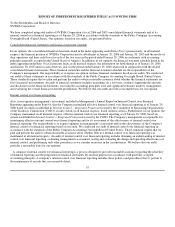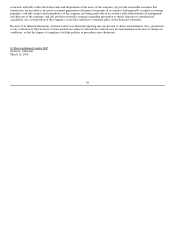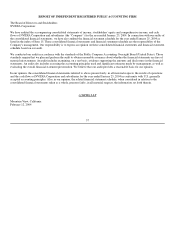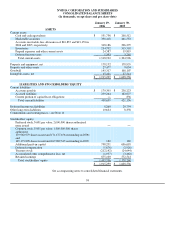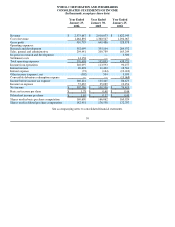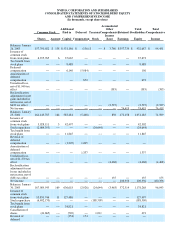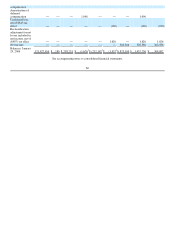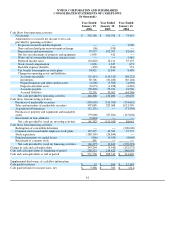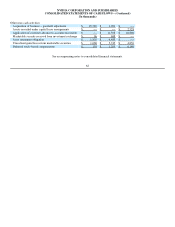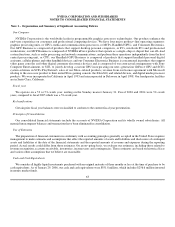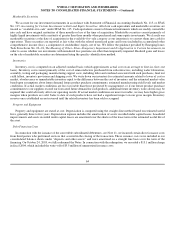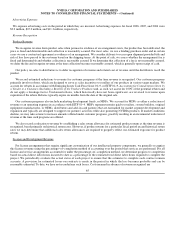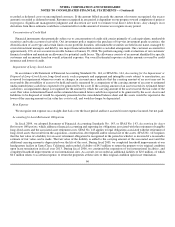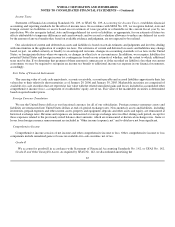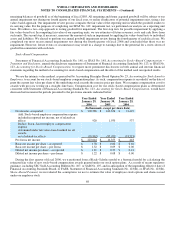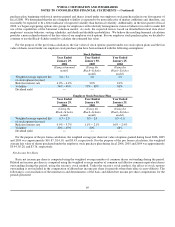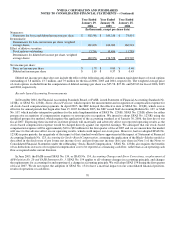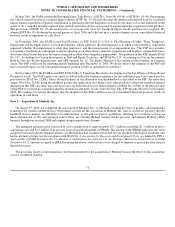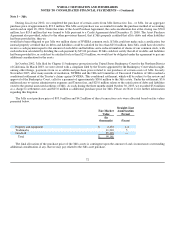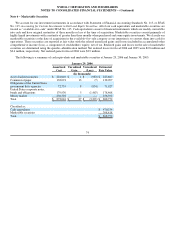NVIDIA 2006 Annual Report Download - page 72
Download and view the complete annual report
Please find page 72 of the 2006 NVIDIA annual report below. You can navigate through the pages in the report by either clicking on the pages listed below, or by using the keyword search tool below to find specific information within the annual report.
NVIDIA CORPORATION AND SUBSIDIARIES
NOTES TO CONSOLIDATED FINANCIAL STATEMENTS − (Continued)
Marketable Securities
We account for our investment instruments in accordance with Statement of Financial Accounting Standards No. 115, or SFAS
No. 115, Accounting for Certain Investments in Debt and Equity Securities. All of our cash equivalents and marketable securities are
treated as “available−for−sale” under SFAS No. 115. Cash equivalents consist of financial instruments which are readily convertible
into cash and have original maturities of three months or less at the time of acquisition. Marketable securities consist primarily of
highly liquid investments with a maturity of greater than three months when purchased and some equity investments. We classify our
marketable securities at the date of acquisition in the available−for−sale category as our intention is to convert them into cash for
operations. These securities are reported at fair value with the related unrealized gains and losses included in accumulated other
comprehensive income (loss), a component of stockholders' equity, net of tax. We follow the guidance provided by Emerging Issues
Task Force Issue No. 03−01, The Meaning of Other−Than−Temporary Impairment and Its Application to Certain Investments, in
order to assess whether our investments with unrealized loss positions are other than temporarily impaired. Realized gains and losses
on the sale of marketable securities are determined using the specific−identification method.
Inventories
Inventory cost is computed on an adjusted standard basis (which approximates actual cost on an average or first−in, first−out
basis). Inventory costs consist primarily of the cost of semiconductors purchased from subcontractors, including wafer fabrication,
assembly, testing and packaging, manufacturing support costs, including labor and overhead associated with such purchases, final test
yield fallout, inventory provisions and shipping costs. We write down our inventory for estimated amounts related to lower of cost or
market, obsolescence or unmarketable inventory equal to the difference between the cost of inventory and the estimated market value
based upon assumptions about future demand, future product purchase commitments, estimated manufacturing yield levels and market
conditions. If actual market conditions are less favorable than those projected by management, or if our future product purchase
commitments to our suppliers exceed our forecasted future demand for such products, additional future inventory write−downs may be
required that could adversely affect our operating results. If actual market conditions are more favorable, we may have higher gross
margins when products are sold. Sales to date of such products have not had a significant impact on our gross margin. Inventory
reserves once established are not reversed until the related inventory has been sold or scrapped.
Property and Equipment
Property and equipment are stated at cost. Depreciation is computed using the straight−line method based on estimated useful
lives, generally three to five years. Depreciation expense includes the amortization of assets recorded under capital leases. Leasehold
improvements and assets recorded under capital leases are amortized over the shorter of the lease term or the estimated useful life of
the asset.
Debt Financing Costs
In connection with the issuance of the convertible subordinated debentures, see Note 11, we incurred certain direct issuance costs
from third parties who performed services that assisted in the closing of the transaction. These issuance costs were included in our
consolidated balance sheets under “deposits and other assets” and were amortized on a straight line basis over the term of the
financing. On October 24, 2003, we fully redeemed the Notes. In connection with the redemption, we recorded a $13.1 million charge
in fiscal 2004, which included the write−off of $5.5 million of unamortized issuance costs.
64


